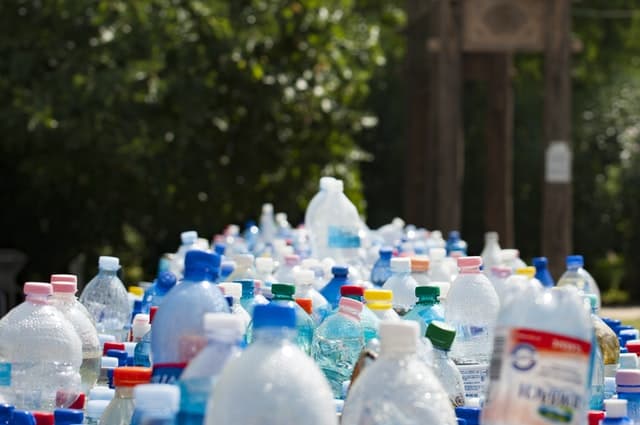Hemp Plastic: Features, Uses and Benefits

Did you know that plastic can be eco-friendly and biodegradable?
We’re talking about hemp plastic and not the conventional plastic. But what is hemp plastic?
Traditionally, plastics are made from petroleum-based compounds, which release toxic gases into the atmosphere. These plastics are non-biodegradable and have negative impacts on our land, water, and wildlife.
However, plants also produce cellulose, which can be used to make organic and biodegradable plastic. In fact, cellulose is the most abundant organic polymer you can find on Earth. That’s how hemp plastic comes to be.
Hemp plastic is made from cellulose that is derived from the stalk of Hemp plant. This plant has a high cellulose count that is required for the plastic manufacturing. There are several different types of hemp plastic, including conventional plastics fortified with hemp fibers and 100% hemp plastic made fully from the hemp plant.
Now that you know what hemp plastic is, let’s look at its characteristics.
Features of Hemp Plastic
Hemp plastic has several characteristics that set it apart from the standard plastic. Here are some of the characteristics:
1. Hemp plastic is biodegradable and recyclable
You may use a food container made for conventional plastic for a few minutes, but it will take centuries to completely decompose. Hemp plastic, on the other hand, takes about 3-6 months to decompose. Moreover, this eco-friendly plastic can be recycled indefinitely. So it doesn’t contribute to permanent pollution.
Petroleum-based plastic is also recyclable, but the process can be toxic as the plastic contains lots of harmful chemicals such as Bisphenol-A (BPA).
2. Hemp plastic is resistant to heat
Hemp plastic offers great thermal, UV, and dimensional stability. Some types of hemp plastic are also resistant to flame. In fact, hemp plastic is about 2.5 times stronger than polypropylene (PP) plastic.
3. Hemp plastic is non-toxic
Conventional plastics contain endocrine disruptors, such as BPA, which affect the endocrine or hormone system in the human body. When BPA gets into your body, it acts like the hormone estrogen, creating a hormonal imbalance that can result in the development of cancerous tumors.
Hemp plastic, on the other hand, is non-toxic. Unlike petroleum-based plastics, it doesn’t have harmful endocrine disruptors. It also doesn’t release toxic fumes into the atmosphere during its production.
Uses of Hemp Plastic
Hemp plastic is incredibly versatile and its applications are endless. Here’s a look at some of the common uses of this environmental friendly plastic:
1. Building materials
Hemp can replace a wide range of building materials, including plastic, concrete, and plasterboard. The fact that hemp plastic is safer and sturdier than fiberglass make it a great replacement for building components that are made from conventional plastic.
In fact, in the near future, we could be able to construct an entire house using compressed hemp fibers. The best thing about hemp-based building materials is that they are resistant to various elements, are cost-effective, and have a lower impact on the environment than the conventional building materials.
2. Car manufacturing
Plant-based materials were first used to make vehicle components in the 1940’s by Henry Ford. Today, many car manufacturers are considering using natural products in the place of plastic and metal components.
Cars that have hemp-based components are carbon neutral. They are also fuel-efficient as they are about 30% lighter. The fact that hemp is biodegradable, these cars won’t be a menace to the environment when they become old.
It’s worth noting that car manufacturers like Ford, Chrysler, GM, Honda, Mercedes, BMW, and Saturn are currently using hemp composite door panels, headliners, trunks, among other components.
3. Paper manufacturing
Conventional paper is made from trees. Trees normally take at least 30 years to be ready for paper manufacturing after planting. Hemp, on the other hand, regenerates in the field in a few months.
That makes hemp a perfect material for manufacturing paper. Moreover, the use of hemp for making paper will help conserve the world’s forests.
In fact, for a long time in history, hemp has been used to produce paper. The hemp-based paper is of fine quality. It is naturally acid-free and never turns yellow and brittle over time as is typical of conventional paper.
4. Pet toys
Hemp is not only used to make products that benefit man but also products that benefit animals like dogs and cats. A company by the name Honest Pet Products uses sustainable hemp and organic wool to make pet toys.
The method the company employs in making these toys is also beneficial for the environment and the society. Namely, the toys are manufactured by people with developmental disabilities in Wisconsin and Women living in Nepal and the Gobi Desert.
5. Aircraft manufacturing
In 2014, a Florida-based aircraft manufacturer was contracted by Hempearth, a Canadian company, to build a four-seater airplane almost entirely out of hemp material. The aircraft would have a wingspan of 36 feet. About 75% of the airplane would be built of industrial hemp.
Benefits of Hemp Plastic
Hemp plastic has a wide range of benefits, including the following:
1. It’s versatile and valuable for several industries
Hemp fibers are spread more randomly when compared to conventional plastics. This enhances their strength in all directions. This increased strength makes hemp plastic ideal for use in many industries.
The construction, packaging, and automotive industries are embracing hemp plastic. This plastic is also lightweight, with an impressively high density to weight ratio. This makes it a potentially good material for making lightweight components in the aerospace industry.
2. Hemp plastic helps to minimize environmental pollutants
The level of carbon dioxide in the atmosphere is increasing by the day. In fact, there is more CO2 in the atmosphere today than at any point in history over the last 80,000 years. This high concentration of carbon dioxide is associated with global warming (the greenhouse effect).
The increased amount of CO2 is partly attributed to the burning of fossil fuels like petroleum. The fact that that conventional plastic is made from petroleum products means that it contributes heavily to increasing carbon dioxide emissions.
Conversely, hemp plastic helps to minimize the greenhouse effect. It does this by absorbing carbon dioxide from the atmosphere and converting it into oxygen. Moreover, hemp plastic releases non-toxic by-products.
3. Hemp plastic materials are cheaper and easier to manufacture
Hemp plastic is completely plastic-injectable. In this process, a hopper is filled up and then melts the raw material before expelling into a mold cavity where it is solidified. This process is highly efficient and can be used to manufacture complex items at a low cost.
4. Hemp plastic can help save wildlife
Conventional plastic has contributed to the death of millions of wildlife. According to a study by the Commonwealth Scientific and Industrial Research Organization and Imperial College of London, 60% of today’s seabirds have plastic in their gut. This number could shoot to 99% by 2050.
Plastic normally disintegrates into tiny pieces when exposed to sunlight. Marine animals end up ingesting these tiny pieces of plastic, which result in various detrimental effects and eventual death of the animals.
Conversely, hemp plastic is biodegradable and non-toxic. So, instead of piling up our water bodies with harmful petrochemical plastics, we should develop sustainable initiatives to recycle hemp plastic safely.






